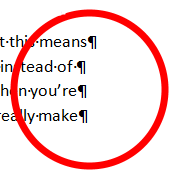I always thought I’d grown up exposed to a rich tapestry of foodie delights, travelling an expansive journey of flavor and nuance expressed in the form of Mexican food.
When I started brown bagging it as an adult, I’d chat with a foodie coworker, comparing lunches and extolling the fine distinctions that made my lunch subtly different every day.
Her response was something along the lines of: “So basically, what you’re saying is that Mexican food is pretty much all beans, cheese, and tortillas.”
That take on it blew me away. I knew that I could taste the difference between pressure-cooked beans and beans slow simmered with a pork fat back. A sniff to diagnose something was over-seasoned with cumin. I could go on about appropriate dishes for farmer’s cheese instead of a sharp cheddar. Was it really all “just beans, cheese, and tortillas”?
Yes, and no.
There’s room for both interpretations. And if you get caught up in the cilantro chopping, or yellow onions versus white, you can starve to death. Or end up with a crap meal because you’ve wasted too much time on choices that might not matter all that much.
We face tons of choices every day. Maybe we’re starting to plan a project, or getting ready to release it … and it’s not quite right. So we triage and figure out what’s important, what could go either way, and what’s totally trivial but affordably nice to have. What’s worth it to focus on and what needs to be chucked overboard.
Her comment eventually brought me to a simple solution: solve your problems like a burrito.
Think of your task and tools and options that can get to your goal as if they were a grocery store full of food and a kitchen store full of implements. But it’s all jumbled up and you’ve never really made a burrito, so maybe you only have a vague idea how to just turn all the everything into a burrito. You know, a solved problem, a solid start or finish, to a project or deliverable.
So make a list. Break your problem or task down to the main parts of a good burrito.
The beans – Protein and starches that are veggie flavor – stuff that really needs to be there.
The cheese – A contrasting flavor that can also be used to contain some of the heat that may come from the beans.
And of course the tortilla – What brings it all together. It might be people or a process or software.
You can add other things that may need to be there, depending on your audience’s taste; lettuce, tomatoes, crema, salsa, limes, chicken, etc.
- What’s the main thing that needs to be part of the project? This makes up the beans of your burrito.
- What are the secondary things you need to support this project? This makes up the cheese and other ingredients of your burrito. Helps bring more flavor along and make it work together.
- How is it all held together? This is the tortilla for your burrito.
If you can pare it down to the essentials and put it together in a logical order, that’s a big step in the right direction. Drop me a line and see how I can help build your “burrito project”.



